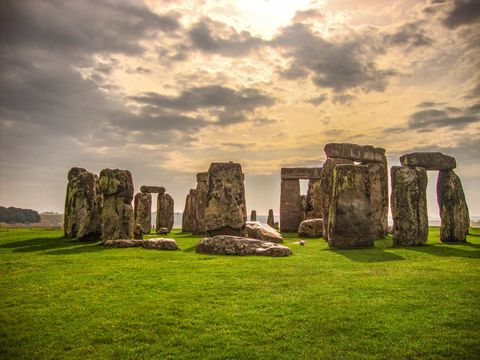
Stonehenge, Salisbury.Flickr / Udit Kapoor
While Stonehenge does not make Britain's other stone circles in size or setting it remains one of Britain's most fascinating tourist attractions and here's why...
Stonehenge is not only the most famous stone circle in Britain but also the best-known ancient monument in the world. Unfortunately, its renown has come at a high cost. Stonehenge has suffered such indignities as graffiti, chain-link perimeter fencing, and an annual Druidic festival staged by a group that can prove no historical connection to the monument. As a result, many visitors find the site less evocative than sites such as Avebury or the Ring of Brodgar. John Aubrey, the 17th-century antiquary, once wrote that Avebury 'as much excels Stonehenge as a Cathedral does a parish church.'
While Stonehenge may not claim supremacy among British stone circles in either size or setting, the complexity of its design and the massive weight of the stones its builders used certainly go unsurpassed. In its earliest form, though, the circle would not have been quite so visually striking.
The ruins of Stonehenge of today reflect only the last of several stages of development. The earliest stage, completed about 3100 BC consisted of two concentric circular mounds separated by a ditch (the 'henge' of the name Stonehenge) about 280 feet in diameter. Around the perimeter of the circle, the Neolithic architects dug 56 pits. Their purpose remains a mystery, but they seem to have outlived their initial function and were later used as burial pits. The Stone Age builders maintained this simple design only for about 500 years, after which the monument fell into neglect and nearly vanished back into the landscape.
Then, about 2100 BC, the prehistoric people took a new interest in the site, bringing in the first of the bluestones to add to what had been, until then, mostly an earthwork structure. The bluestones were apparently to have been arranged in the form of two concentric circles inside the ditch and mound.
A Herculean effort would have been required to bring the stones to the building site. They were quarried 135 miles away in the Preseli Mountains of south-western Wales (possibly because of that location's purported mystical power) and transported by both land and water to Salisbury Plain. But with this mammoth undertaking nearly three-quarters complete, the builders abandoned the scheme and instead embarked on an even more grandiose design.
This decision marked the third stage of building at Stonehenge and resulted in the placement of the stones most conspicuous today. Some of them remain standing, exactly as they were placed roughly two millennia ago, but others lie in a confusing jumble from which only a careful study can reveal the details of the original arrangement. (According to tradition, the fall of stone at Stonehenge is a harbinger of death for the reigning monarch.)
The outermost ring consisted of 30 upright stones supporting a continuous circle of horizontal lintels. These were probably raised in stages, using levers to inch the blocks up little by little, and sliding wooden supports underneath to bear the stone's weight.
A more ancient theory of how Stonehenge was built postulates that Merlin the Magician levitated the entire structure and transported it through the air from Ireland, where it had originally stood. Within the outer ring stood an even more impressive horseshoe-shaped arrangement of upright stones, set into the ground in pairs. Each pair, in turn, was capped with a lintel, forming a 'trilithon'. The largest remaining upright stands 22 feet tall and weighs more than 45 tonnes.
This intricate design far surpasses all other stone circles in Britain, but it is not only the positioning and weight of the stones that distinguishes Stonehenge but also the painstaking manner in which the stones were dressed. Each of the upright stones was smoothed and shaped before it was erected. The lintels were held in place by mortice-and-tenon joints, and shaped with curved sides to form a perfect circle when placed atop the uprights.
Sometime after the trilithons were built, the final stones were added. Actually, these stones were recycled bluestones from the abandoned stone circle that preceded the uprights and lintels. The stones were set in a ring just inside the outer circle, and in a horseshoe-shaped arrangement just inside the large trilithon horseshoe.
Finally, two more concentric circles of holes were dug around the entire structure, apparently for yet two more rings of stone to be set into, but for unknown reasons, the stones were never placed. Today these holes are not visible.
Since about 1500 BC, the ancient builders' carefully planned and executed design has been left to decay. Most of the damage has probably occurred in the last few hundred years, as local builders helped themselves to convenient stones. Today's concern for preservation is a relatively new attitude; in the recent past, visitors to the site could rent a hammer with which to knock off a piece of stone for a souvenir.
* Originally published in Sept 1997.





Comments